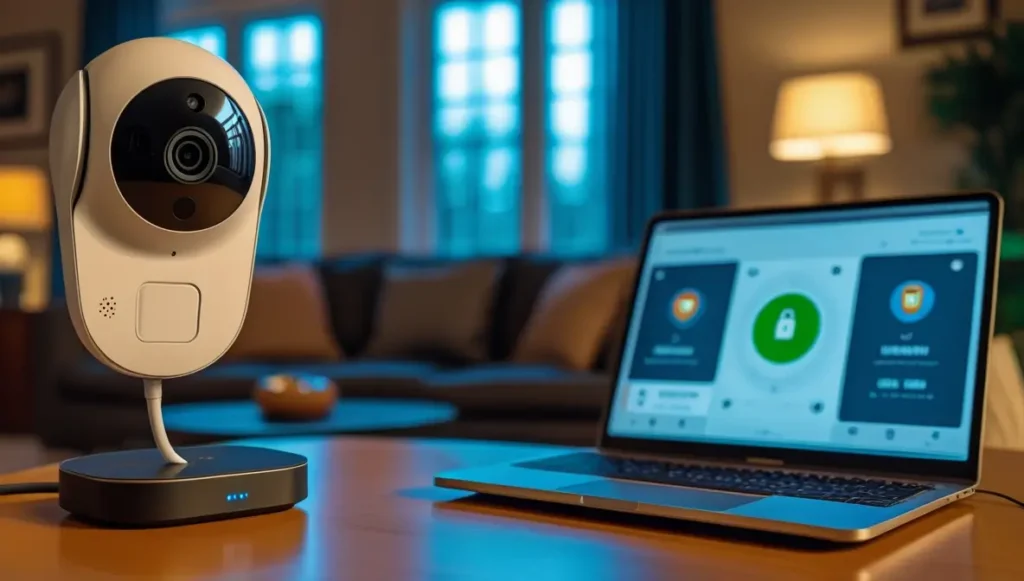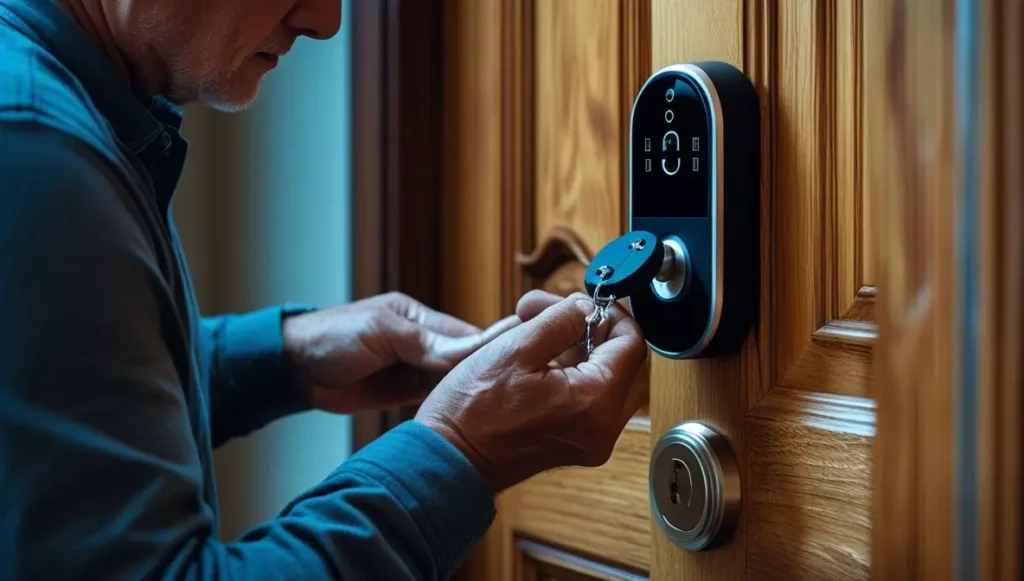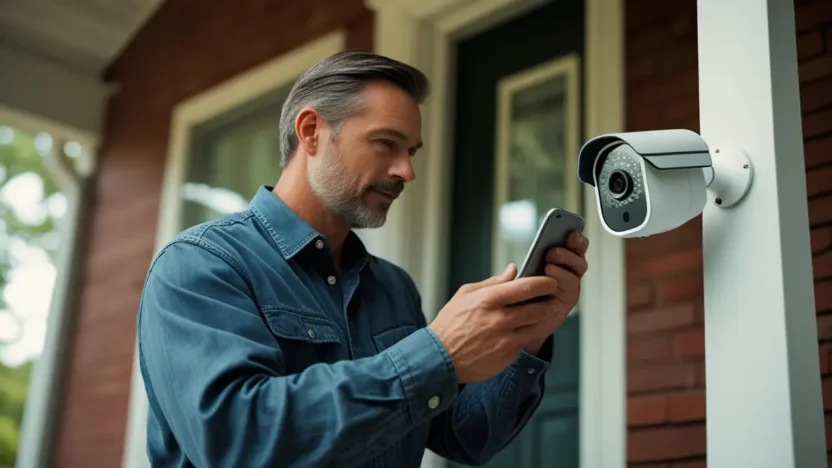As we age, the comfort and safety of our homes become even more important. For men over 50, ensuring the security of your home is not just about protecting your property; it’s about peace of mind. A home security system can provide that assurance, but many people hesitate due to perceived complexity or cost. The good news is that setting up a home security system has never been easier, thanks to advancements in technology and user-friendly devices. In this guide, we’ll walk you through everything you need to know to set up a home security system effortlessly.
Why Invest in a Home Security System?
Before diving into the setup process, it’s essential to understand why a home security system is a worthwhile investment. Here are some compelling reasons:
- Protection Against Intruders : Burglars are less likely to target homes with visible security measures.
- Remote Monitoring : Modern systems allow you to monitor your home from anywhere via a smartphone app.
- Peace of Mind : Knowing your home is secure allows you to focus on other priorities.
- Insurance Discounts : Many insurance companies offer discounts for homes equipped with security systems.
“A secure home is not just a luxury; it’s a necessity for maintaining independence and confidence as we grow older.” – Security Expert
Types of Home Security Systems
When choosing a home security system, it’s crucial to understand the options available. Here’s a breakdown of the most common types:
| Type | Description | Pros | Cons |
|---|---|---|---|
| DIY Systems | Easy-to-install kits that don’t require professional help. | Cost-effective, customizable, user-friendly | May lack advanced features |
| Professionally Installed | Systems installed by experts, often with monitoring services. | Comprehensive coverage, reliable support | Higher upfront cost, subscription fees |
| Smart Home Integration | Systems that connect with other smart devices like lights, locks, and cameras. | Seamless automation, remote access | Can be expensive, requires tech-savviness |
Step-by-Step Guide to Setting Up Your System
Step 1: Assess Your Needs
Before purchasing any equipment, evaluate your home’s layout and determine what you need. Consider the following questions:
- How many entry points (doors and windows) need coverage?
- Do you want indoor or outdoor cameras?
- Is remote monitoring important to you?
“Start small if you’re unsure. You can always expand your system later as your needs evolve.”
Step 2: Choose the Right Equipment
Here’s a list of essential components for a basic home security system:
- Security Cameras : For monitoring key areas.
- Door and Window Sensors : To detect unauthorized entry.
- Motion Detectors : For detecting movement inside or outside your home.
- Smart Locks : To control access remotely.
- Alarm System : To alert you and neighbors of potential threats.
If you’re opting for a DIY system, popular brands like Ring, SimpliSafe, and Nest offer user-friendly kits.
Step 3: Install the Equipment
Most modern systems come with detailed instructions, making installation straightforward. Follow these tips for a smooth setup:
- Place cameras at strategic locations, such as near doors and driveways.
- Ensure sensors are properly aligned with doors and windows.
- Test each component after installation to confirm functionality.

Step 4: Connect to Wi-Fi and Download Apps
Almost all modern security systems rely on Wi-Fi connectivity. Once your devices are installed:
- Connect them to your home network.
- Download the corresponding app on your smartphone or tablet.
- Create an account and sync your devices.
Pro Tip: Use a strong, unique password for your Wi-Fi network to prevent hacking attempts.
Step 5: Customize Settings
Take advantage of customization options to tailor the system to your preferences. For example:
- Set motion detection zones to avoid false alarms from pets or trees.
- Schedule when certain devices should be active (e.g., cameras during nighttime).
- Enable push notifications for real-time alerts.
Tips for Maximizing Your System’s Effectiveness
Even the best security system can fall short without proper usage. Here are some tips to get the most out of your investment:
- Regular Maintenance : Check batteries and connections periodically to ensure everything is functioning correctly.
- Test Alarms : Conduct monthly tests to verify that alarms sound as expected.
- Educate Family Members : Make sure everyone in the household knows how to use the system.
- Integrate with Other Devices : Pair your security system with smart lighting or thermostats for added convenience.

Common Mistakes to Avoid
Setting up a home security system may seem simple, but mistakes can compromise its effectiveness. Here are some pitfalls to watch out for:
- Ignoring Blind Spots : Ensure all vulnerable areas are covered by cameras or sensors.
- Using Weak Passwords : Cybersecurity is just as important as physical security.
- Overlooking Professional Monitoring : While self-monitoring is cost-effective, professional services provide an extra layer of protection.
- Skipping Regular Updates : Firmware updates often include critical security patches.
Budget-Friendly Options for Every Need
Not all home security systems break the bank. Below is a comparison of affordable yet reliable options:
| Brand | Starting Price | Key Features | Best For |
|---|---|---|---|
| Wyze | $20 | Indoor/outdoor cameras, motion alerts | Budget-conscious users |
| Arlo | $100 | Wireless cameras, night vision | Outdoor surveillance |
| ADT Pulse | $36/month | Professional monitoring, smart home integration | Comprehensive protection |
The Future of Home Security
As technology continues to evolve, so does the landscape of home security. Innovations like facial recognition, AI-powered analytics, and drone patrols are becoming more accessible. While these advancements may not be necessary for everyone, staying informed about new trends can help you make better decisions for the future.
“The key to effective home security lies in balancing practicality with innovation.”
Final Thoughts
Setting up a home security system doesn’t have to be a daunting task. With careful planning and the right tools, you can create a robust system that meets your needs and fits your budget. Whether you choose a DIY solution or opt for professional installation, the peace of mind that comes with knowing your home is secure is invaluable. Remember, investing in your safety today ensures a brighter, worry-free tomorrow.



